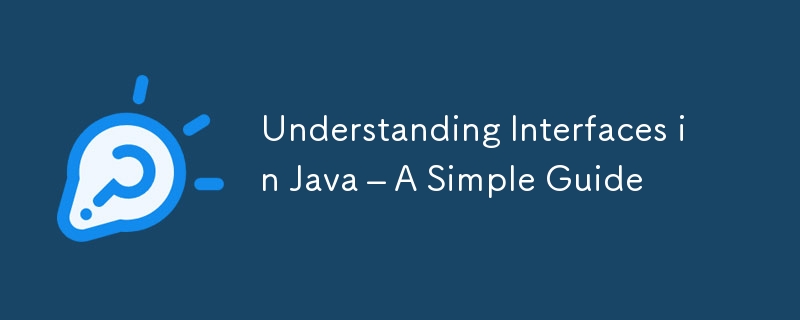

In Java, an interface is like a contract that you set for classes. When a class agrees to an interface, it promises to follow the rules or methods defined by that interface. Think of it like a set of instructions that the class has to obey.
Interfaces are super handy when you want different classes to follow the same set of rules but implement them in their own way. Imagine a group of animals: a bird flies, a fish swims, and a dog runs. If you want them all to "move" but in their unique way, you’d use an interface to define that "move" action.
Let’s create a simple interface called Movable:
public interface Movable {
void move(); // Any class that implements Movable must define how to move
}
This interface has just one method, move(). Any class that agrees to this interface must have a move() method.
Let’s create some classes that implement the Movable interface:
public class Bird implements Movable {
public void move() {
System.out.println("The bird flies.");
}
}
public class Fish implements Movable {
public void move() {
System.out.println("The fish swims.");
}
}
Here, the Bird class and the Fish class both agree to the Movable interface, but they each have their own way of moving.
One cool thing about interfaces is that a class can implement more than one. Let’s say we also have an interface Soundable:
public interface Soundable {
void makeSound();
}
A Dog class might implement both Movable and Soundable:
public class Dog implements Movable, Soundable {
public void move() {
System.out.println("The dog runs.");
}
public void makeSound() {
System.out.println("The dog barks.");
}
}
This means our Dog can both move and make a sound!
Interfaces in Java are a powerful way to enforce rules across different classes while allowing each class to implement those rules in its own unique way. They promote flexibility and consistency in your code, making it easier to manage and extend.
Das obige ist der detaillierte Inhalt vonSchnittstellen in Java verstehen – Eine einfache Anleitung. Für weitere Informationen folgen Sie bitte anderen verwandten Artikeln auf der PHP chinesischen Website!
 So legen Sie die Schriftfarbe in HTML fest
So legen Sie die Schriftfarbe in HTML fest
 Pycharm-Methode zum Öffnen einer neuen Datei
Pycharm-Methode zum Öffnen einer neuen Datei
 Die Rolle der Validierungsfunktion
Die Rolle der Validierungsfunktion
 Was ist eine Sternnetzwerktopologie?
Was ist eine Sternnetzwerktopologie?
 Welche Server sind von der Registrierung ausgenommen?
Welche Server sind von der Registrierung ausgenommen?
 Der Unterschied zwischen großer Funktion und maximaler Funktion
Der Unterschied zwischen großer Funktion und maximaler Funktion
 Was sind MySQL-Engines?
Was sind MySQL-Engines?
 Wie man iis löst, kann nicht gestartet werden
Wie man iis löst, kann nicht gestartet werden




